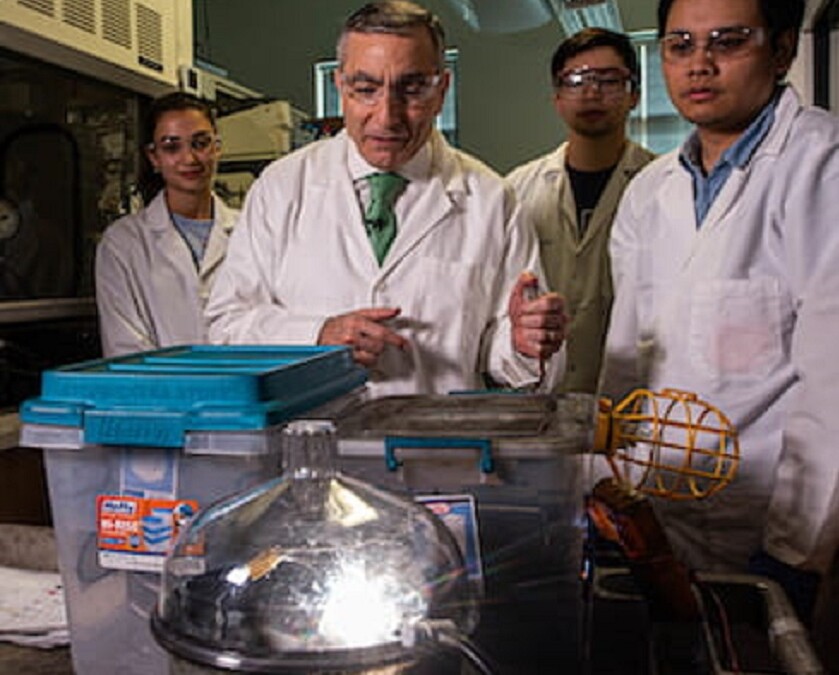
Imagine if you could turn a material that costs $100 per ton into one that costs thousands of dollars per pound—it’s the kind of story attached to the fable of the Philosopher’s Stone.
At Rice University, a group of scientists started turning coal, an energy source of little value, into graphene, a raw material with dozens of applications in electronics. Then, the scientists realized they could use any carbon source, which for their experiments included dead cockroaches, coffee grounds, and girl scout cookies.
Graphene comes from a mineral called graphite, a carbon allotype, and one of only two forms of naturally-occurring carbon. It has metal-like properties and is valuable for use as a conductor in aerospace, medicine, and electronics.
The global demand for this material is predicted to top $1 billion at an average price of $67,000 per ton.
Using a technique they created called “flash graphene” the scientists were able to create high-value graphene flakes from a variety of raw materials by hooking them up to a pair of capacitors and electrodes that delivered a 3,000° Kelvin shock.
This, according to experiment lead Dr. James Tour, a professor of materials and nanotechnology at Rice University, passes a current through the trash or coal with enough energy to break every carbon-carbon bond in the substance, before they reorganize themselves as graphene.
“You can put your finger right on the container a few seconds afterwards,” Tour said. “And keep in mind this is almost three times hotter than the chemical vapor deposition furnaces we formerly used to make graphene, but in the flash process the heat is concentrated in the carbon material and none in a surrounding reactor.”
This, Tour says, has unique advantages and allows the team to create flash graphene in bulk.
“All the excess energy comes out as light, in a very bright flash, and because there aren’t any solvents, it’s a super clean process,” he said.
MORE GREAT INNOVATION: Samsung Cuts Energy Usage of Their Computer Chips by 50% In Big Market Innovation
Graphite mining comes with all the environmental unhappiness of any other kind of mining, and the team identify two ways in which bulk flash graphene, along with making a variety of products much cheaper, could really improve the environmental footprint of manufacturing.
The first is shown in the paper Tour et al. published in Nature on their work—that adding just 0.1% of graphene to concrete could reduce its environmental footprint by one-third.
MORE MATERIALS ENGINEERING: Startup is Recycling Solar Panels Turning Waste into Valuable Material
“Essentially, we’re trapping greenhouse gases like carbon dioxide and methane that waste food would have emitted in landfills,” Tour told his university press. “We are converting those carbons into graphene and adding that graphene to concrete, thereby lowering the amount of carbon dioxide generated in concrete manufacture. It’s a win-win environmental scenario using graphene.”
Second, as he explains in the video below, existing coal mines and companies which mine coal could sell their product to flash graphene production rather than coal power plants. This would eliminate any CO2 emissions that would normally come from that coal being burned, and would likely save thousands of jobs for coal companies.
WATCH the story below…
SHARE This Ingenious Invention With Your Eco-Anxious Friends…



















